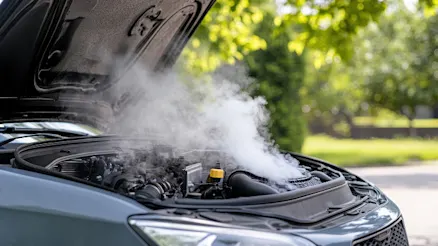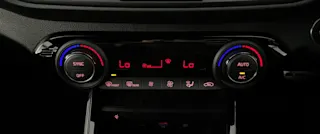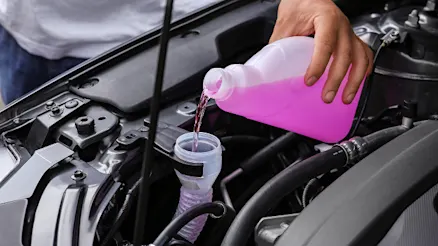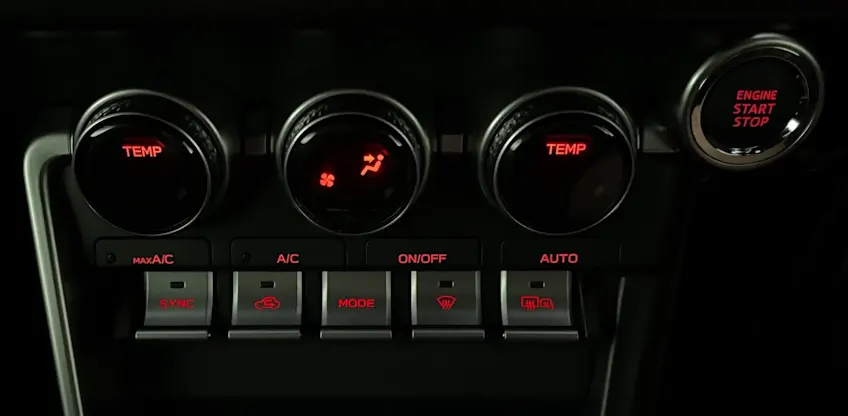
What to do when your car overheats
Car overheating? Learn why it happens, what to do (and avoid), and follow our step-by-step guide to stay safe and prevent engine damage.


Car overheating? Learn why it happens, what to do (and avoid), and follow our step-by-step guide to stay safe and prevent engine damage.

Discover what wear and tear means for your car, with key examples like tyre wear, brake wear, and paint fading. Learn how to minimise wear and keep your car in top condition.

Stay safe on the road with these essential monthly car maintenance checks. From engine oil to tyre pressure, learn how to keep your car running smoothly and avoid costly repairs.
Let’s face it: Does anyone actually know what the recirculation button does? Many drivers are puzzled by the array of symbols and buttons on their car's air conditioning system. You’re in luck, because we’re decoding these AC symbols for you to take control of your car's climate with ease, and finally learn how to recirculate with confidence.
Before diving into the specifics, let's cover some fundamental concepts about automotive air conditioning systems. Most modern cars come equipped with a variety of features to regulate cabin temperature, including air conditioning (AC), heating, fan speed control, and airflow direction. These features are typically controlled through a panel located on the dash or centre console. Let’s take a look:
We all know this one, it’s what turns the AC on! It’s typically a button or dial that you can turn for cool or warm air.
If you see the word ‘Auto’ on the AC dial, your car has automatic temperature control. By pressing this button, your car will automatically adjust the temperature and strength of the air pumping through the vents so the cabin reaches an optimal temperature.
If your car has dual-zone (or tri-zone for bigger cars) temperature control, this button allows you to sync or separate the target temperatures and climate control of each zone.
This fan button controls the force that air will be blown through the vents. If you see two fan icons with one bigger than the other, this is where you can set a lower or higher fan speed.
This symbol of an arrow looping within a car icon is the air intake control button. Press this button to recirculate air already inside the cabin, rather than drawing from outside the car. You’d use this when it’s hot, humid, or even smelly outside. We’ll cover more about this below.
If your windshield ever fogs up, these buttons will do the trick. It activates the vents at the base of the windshield to warm up the glass and eliminate any condensation and frost. The front windshield one will look like a curved shape, while the rear will look like a rectangle.

Rather than pulling in fresh air from outside, the recirculation function allows you to circulate the air already inside the cabin, which can quickly and efficiently cool it down, especially on warmer days.
Here's how it works: When your AC is drawing in hot air from the outside, it requires more energy to cool the inside. However, with the recirculation system activated, your air conditioner only needs to maintain the already cooled air within the car, which requires less work for your AC. Some cars will even automatically switch to recirculation mode when the AC is set to maximum for optimal cooling performance.
On hot summer days, it's best to use the recirculation button to reduce strain on your air conditioning system. Not only will your car’s cabin cool more quickly, but you’ll also help your fuel economy because your AC is not working as hard to cool the cabin.
If you get into a car that has been sitting outside in the sun on a hot day, you’ll need to get rid of all the hot air from the car before you hit recirculate. Wind down your windows and drive for a few minutes until the stale, hot air has been evacuated. Then you can hit the recirculation switch and dial up the maximum cooling effect.
Another great moment to use the recirculation button is when you’re stuck in traffic or a tunnel or car park. Since the AC pulls in air from outside, it may also be sucking in exhaust fumes from nearby vehicles. With recirculation, you can block polluted air from entering your cabin, and you’ll breathe easier too. You might even notice a lot of tunnels around Australia will prompt drivers to turn on recirculation as soon as you enter to keep drivers from breathing in the large build-up of pollutants inside the tunnel.
Want more tips and tricks? We’ve got you. Check out our guide on common car problems and how to solve them, or learn how to change your cabin air filter.